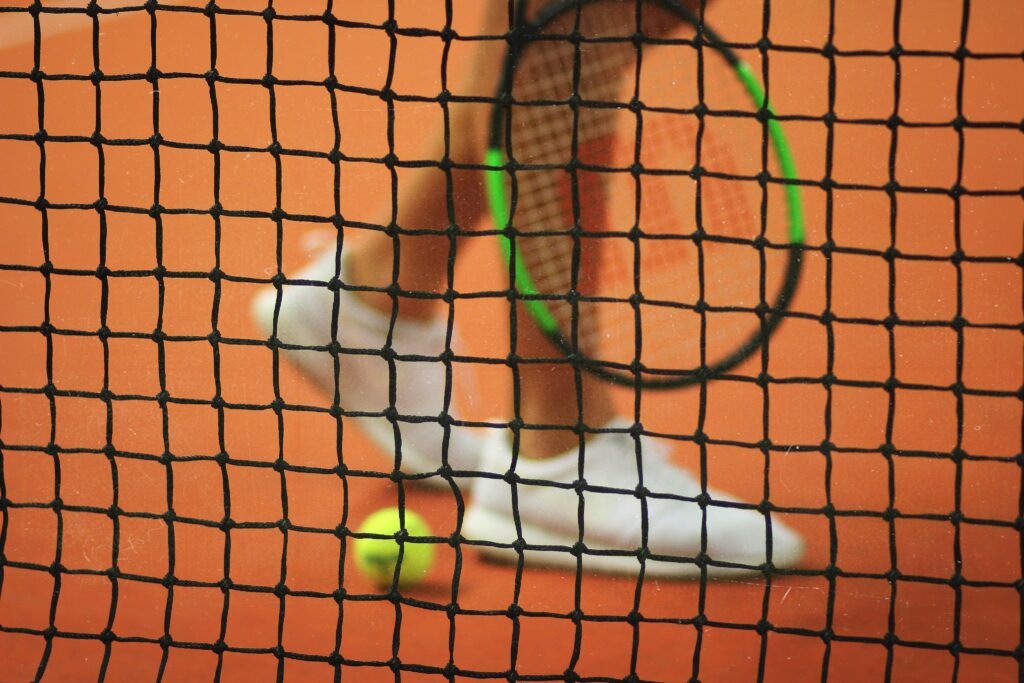Pickleball vs Tennis: Which Sport Is Better for Beginners?

You’re eager to pick up a racket sport, but you’re caught between tennis and pickleball, the rapidly rising newcomer in India’s sports scene. Tennis might impress with its global glamour, yet its steep learning curve and demanding gameplay might intimidate newcomers.
On the other hand, pickleball is becoming increasingly popular: around 40-50 new courts are being added in India every month. But the sport remains relatively unknown, leaving you to wonder if it’s beginner-friendly or just another passing trend.
Pickleball vs Tennis: What’s the best? That’s the pressing question.
To make the choice easier, learning the differences between pickleball and tennis is important. Let us compare both sports on the ease of play, equipment needs, accessibility, etc., and help you confidently choose the best fit.
Getting the Basics: Pickleball and Tennis
At first glance, tennis and pickleball share similarities. Both involve hitting a ball over a net on a marked court. Yet, the distinctions in court size, equipment, and rules make each game unique.
Tennis involves larger courts, heavier rackets, and faster-moving balls, demanding significant strength and agility.
On the other hand, pickleball is played on a much smaller court using lightweight paddles and a perforated plastic ball. These differences influence the ease of learning and playing each sport for newcomers.
Pickleball vs Tennis: Main Differences
| Aspect | Pickleball | Tennis |
| Court Size | 20 ft x 44 ft | 36 ft x 78 ft |
| Court Surface | Usually hard (indoor/outdoor) | Hard, clay, or grass |
| Net Height | 34 inches at center | 36 inches at center |
| Ball Used | Plastic perforated ball (like a whiffle ball) | Pressurised rubber tennis ball |
| Paddle/Racket | Solid paddle, no strings | Strung racket with strings |
| Scoring System | Only serving team can score; games to 11 (win by 2) | Both teams can score; the sets and games system |
| Serving Style | Underhand only | Overhand or underhand allowed |
| Movement Required | Less running, more compact movements | More court coverage, intense running |
| Suitability for Beginners | Easier to learn, slower-paced | Steeper learning curve, faster-paced |
| Game Duration | Shorter and quicker games. | Longer matches. |
| Social Aspect | More casual and social play is common. | Both casual and competitive formats exist. |
Pickleball Court vs Tennis Court: Size and Impact on Beginners
The most notable difference between pickleball and tennis lies in their court dimensions. A standard tennis court measures 78 feet by 27 feet for singles matches, expanding to 36 feet for doubles.
In contrast, a pickleball court measures just 44 feet by 20 feet. You can fit approximately three pickleball courts within a standard tennis court. Tennis courts also include tramlines for singles and doubles play, whereas pickleball maintains the same court size for both formats.
The smaller court allows new players to quickly grasp gameplay dynamics, experience immediate success, and avoid fatigue early in their training. In contrast, beginners often find the larger tennis court daunting. It leads to frustration due to difficulty in maintaining rallies and returning shots consistently.
Courts of pickleball vs tenning: Tennis courts come in various surfaces hard, grass, and clay while pickleball is traditionally played only on hard courts.
Whether your choice is tennis or pickleball, you can now book your favourite sports venue for either with Khelomore.
Equipment for Tennis vs Pickleball
Beginners often underestimate the importance of equipment differences. Tennis rackets are heavier with frames. Their strings are designed to powerfully strike felt-covered rubber balls that can be pressurised at varying levels. So, beginners may initially struggle with control and wrist strength.
Tennis vs pickleball paddles are usually made from lightweight materials such as graphite or composite materials. The pickleball’s plastic design with holes slows the pace and reduces bounce height. It allows easier hits and smoother rallies.
Thus, pickleball equipment inherently supports skill-building in beginners, whereas tennis gear demands more practice and physical adaptation.
Tennis Net Height vs Pickleball: Ease of Gameplay
Another subtle aspect in the pickleball vs tennis discussion is the net height.
The tennis net height vs the pickleball net height is slightly different. While tennis nets stand at 3 feet (91.4 cm) at the center, pickleball nets are set slightly lower at 34 inches (86.4 cm) at the center.
A slight reduction in net height may seem minimal. But it significantly improves the ease of play in pickleball. Beginners find it easier to control their shots. They can sustain longer rallies and remain engaged in the game longer due to fewer missed balls hitting the net.
Fitness Requirements: Tennis vs Pickleball
Fitness is another consideration beginners must keep in mind. Tennis demands robust cardiovascular fitness, muscular endurance and flexibility. Beginners may initially find tennis vs pickleball physically overwhelming.
Pickleball, however, demands less extensive physical exertion. Its compact court size, slower ball speeds and shorter rally distances are just right for beginners not yet conditioned for high-intensity athletic activities.
Rules and Scoring Differences
The rules of tennis and pickleball also present distinctions for beginners. In pickleball, the game begins with an underhand serve diagonally across the court, and there’s a special “double bounce rule” requiring the ball to bounce once on each side before any volley is allowed.
Additionally, pickleball includes a designated no-volley zone (“The Kitchen”) near the net, adding strategic depth.
Scoring methods differ greatly.
Tennis involves scoring by sets and games, where players must win six games by a margin of two to secure a set. Games are scored using a 15-30-40 point structure, requiring a two-point lead to win.
In contrast, pickleball games are simpler: first to reach 11 points wins, also requiring a two-point margin. Only the serving team can score points in pickleball.
Social Aspects and Community Involvement
Both tennis and pickleball present excellent social opportunities. Tennis enjoys a well-established global and national community, with structured clubs, tournaments and training academies widely available in India. This infrastructure can provide great social networks.
Pickleball is also quickly building its community in India. The active pickleball player base in the country has nearly tripled in just three years growing by 275%. It has reached about 60,000 players by the end of 2024.
Its relative novelty in India means beginners often start alongside others at similar skill levels, creating a supportive environment. The social encouragement in pickleball circles is a great incentive for beginners’ overall experience.
Accessibility and Costs
Tennis facilities are widespread. But they involve higher costs related to court rentals, training sessions, equipment, and gear maintenance. For many beginners, these costs could represent a to entry.
Pickleball is a more affordable alternative. Its simple court setup and inexpensive equipment lower the financial barrier. The lower overall costs associated with pickleball ease entry for beginner players.
Platform Tennis vs Pickleball: Which is More Beginner-Friendly?
Platform tennis is another racket sport, which sometimes enters the conversation. But it requires specific infrastructure and is less accessible in India. Comparing platform tennis vs pickleball highlights the latter’s advantages: simpler rules, minimal equipment, and easy-to-learn techniques.
Pickleball’s plastic ball moves slower than tennis balls, providing more reaction time for beginners. The slower gameplay helps newcomers to learn proper techniques and build confidence quickly.
Platform tennis, conversely, features quicker gameplay. It has limited accessibility, requiring specialised courts that aren’t readily available across most Indian cities.
Final Thoughts
Choosing between tennis vs pickleball boils down to personal preference, fitness goals, and social interests. However, for beginners looking for easy entry, quick progress, and affordable play, pickleball undoubtedly holds an advantage.
The game’s smaller court, beginner-friendly equipment, lower physical demand, supportive community, and cost-effectiveness make it an ideal choice. Tennis, while it gives unparalleled long-term rewards in athleticism and competition, poses a steeper initial learning curve.
Above all, pickleball’s rise in popularity among sports enthusiasts in India speaks volumes about why it could be considered by beginner players.
FAQs
What is the difference between pickleball and badminton?
Both are racket sports. While pickleball is played with a solid paddle and a plastic ball on a hard court, badminton uses a stringed racket and shuttlecock on a lighter, netted court surface. Pickleball has bounce-based rallies; badminton is entirely air-based.
Are there age restrictions for learning pickleball or tennis?
There are no strict age limits to play either of the sports. Children as young as 6 can start with anything. Adults and seniors can comfortably pick up pickleball due to its low-impact gameplay and simple rules.
Can I practice pickleball alone like tennis?
Pickleball is better played in pairs or groups. But you can still practice serves, wall rallies and paddle control solo. However, solo tennis practice has more flexibility with ball machines and rebound walls.
Can I switch from pickleball to tennis later if I start with pickleball?
Yes, many players begin with pickleball and transition to tennis over time. The hand-eye coordination and basic court awareness gained in pickleball can ease your shift to tennis.
How long does it take to learn the basics of pickleball or tennis?
Most beginners can grasp pickleball basics within a few sessions. Tennis usually takes longer. It can take around 1 to 2 months to get comfortable with serving, rallying, and footwork in tennis.


